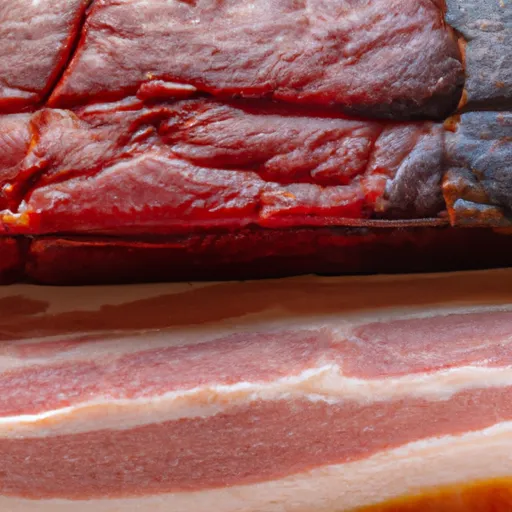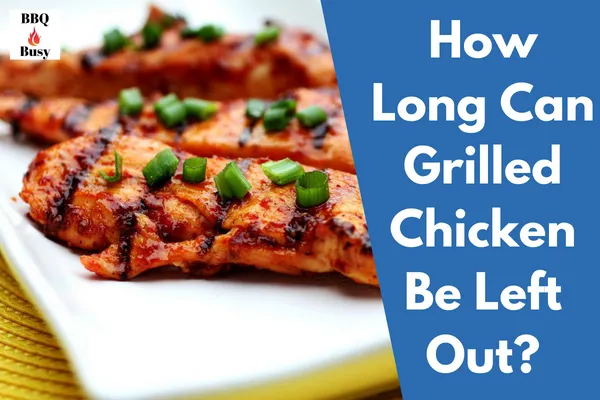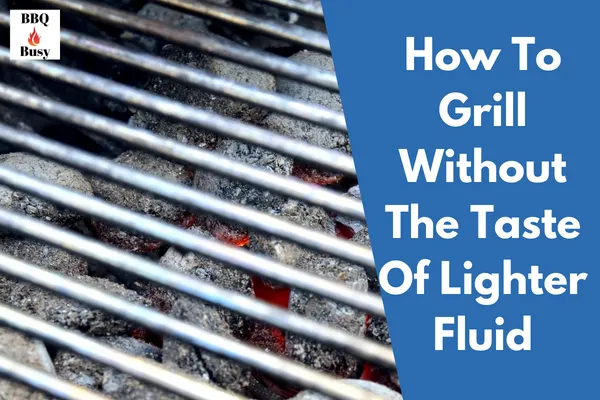
Are you a fan of brisket? If so, you’ve probably heard the debate over whether to leave the bark on or remove it. The ‘bark’ refers to the flavorful crust that develops on the outside of the brisket during the smoking process.
Some pitmasters swear by leaving the bark on, while others prefer to remove it for a different taste experience. In this article, we’ll explore the pros and cons of leaving bark on your brisket and help you make the decision: to bark or not to bark?
For many BBQ lovers, brisket is the holy grail of smoked meats. It’s a tough cut of meat that requires patience and skill to cook to perfection, but when done right, it’s a thing of beauty. The bark is an essential part of the brisket experience for many people, as it adds a layer of flavor and texture to the meat.
However, there are also valid reasons for removing the bark, such as creating a more tender and juicy brisket or reducing the intensity of the smoke flavor. Whatever your preference, understanding the basics of brisket bark is key to making an informed decision.
So, let’s dive in!
Understanding the Basics of Brisket Bark
You’re learning about the crispy outer layer that forms on a slow-cooked piece of meat, which is key to creating a mouth-watering meal.
This outer layer is known as the ‘bark’ and is formed when the surface of the meat is exposed to heat for an extended period of time. The bark is a result of a chemical reaction that occurs between the meat’s surface and the smoke and heat that surrounds it.
The bark is a desirable feature in a brisket because it provides texture and flavor. The bark is crispy, full of smoky flavor, and has a slightly sweet taste due to the caramelization of the meat’s natural sugars.
Additionally, the bark helps to seal in moisture, making the brisket juicy and tender. However, some people prefer their brisket without bark, as they find it too tough or overpowering. Ultimately, the decision to have bark or no bark on a brisket comes down to personal preference.
The Pros of Leaving Bark on Your Brisket
Feeling confident about the crispy texture and smoky flavor of your mouth-watering meat is worth preserving the natural outer layer. Leaving the bark on your brisket is a great way to achieve this.
The bark contains a lot of flavor and texture that would otherwise be lost if removed. Plus, it adds a beautiful, rustic appearance to your dish that is sure to impress your guests.
In addition, the bark acts as a natural barrier that helps to keep the moisture and juices inside the meat. By leaving the bark on, you’re essentially creating a protective layer that helps to prevent the meat from drying out.
This results in a more tender and flavorful brisket that is sure to be a hit at your next barbecue. So go ahead, embrace the bark and enjoy the full potential of your mouth-watering brisket.
The Cons of Leaving Bark on Your Brisket
It’s like wearing a rough, scratchy sweater all day – sure, it looks cool and trendy, but it can be uncomfortable and irritating. The same can be said for leaving bark on your brisket. While it may look rustic and authentic, there are some downsides to keeping the bark on during the smoking process.
Here are a few reasons why you may want to think twice about leaving the bark on your brisket:
– The bark can be bitter: The bark on your brisket is made up of charred meat and spices, which can create a bitter taste that may not be to everyone’s liking.
– It can be tough to chew: The bark is usually the toughest part of the brisket, and leaving it on can make your meat harder to chew and enjoy.
– It can affect the smoke ring: The bark can create a barrier between the smoke and the meat, which can affect the formation of the smoke ring and alter the flavor of your brisket.
Ultimately, the decision to leave the bark on your brisket is a personal one, but it’s important to consider the potential downsides before making your choice.
Removing Bark for a Different Taste Experience
If you’re looking for a tender, juicy meat with a smooth and savory taste, consider removing the outer layer for a different culinary experience.
While the bark does add a smoky flavor and a nice crust to the brisket, it can also be tough and bitter. Removing it can create a more even flavor profile and texture throughout the meat.
To remove the bark, use a sharp knife to carefully slice off the outer layer. Be sure not to cut too deep and remove too much of the meat.
Once the bark is removed, season the meat with your preferred rub or seasoning. You may find that the flavors penetrate deeper into the meat without the bark in the way.
Give it a try and see if you prefer the taste of the brisket without the bark.
Making the Decision: To Bark or Not to Bark?
You’re about to make a decision that will determine whether you’ll be singing ‘hallelujah’ or crying in your brisket. To bark or not to bark? That’s the question.
Here are some things to consider before you make the final decision:
– Bark adds a smoky flavor and texture to the meat.
– No bark allows the meat to absorb more rub and smoke flavor.
– Bark can provide a barrier that keeps the meat from drying out.
– No bark allows the seasoning to penetrate the meat more thoroughly.
– Bark can be tough and difficult to chew, making it less desirable for some.
Ultimately, the decision to bark or not to bark depends on your personal preference and desired taste experience. If you’re a fan of smoky flavors and don’t mind a little bit of chewiness, bark may be the way to go.
On the other hand, if you prefer a more tender and juicy brisket, removing the bark might be the better option for you.
Whatever you decide, make sure to enjoy your brisket with some good company and a cold drink.
Conclusion
So, you’re still not sure whether to leave the bark on your brisket or not? You may be thinking, “But what if I ruin the whole thing by leaving the bark on?” Don’t worry, it’s a common concern.
However, it’s important to remember that cooking is all about experimentation and finding what works best for you. Think about it this way: if you never try leaving the bark on, you’ll never know if it’s your new favorite way to cook brisket.
And if it doesn’t turn out quite as expected, that’s okay too. The beauty of cooking is that there’s always room for improvement and learning from mistakes. So go ahead, give it a try and see what delicious results you can create with or without the bark.
Happy cooking!



